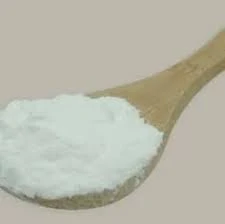The Role of Pentoxifylline in Improving Blood Flow and Its Clinical Applications
Pentoxifylline, a xanthine derivative, has been widely studied for its pharmacological properties aimed at improving blood flow and enhancing tissue oxygenation. Initially developed for the treatment of intermittent claudication due to peripheral vascular disease, pentoxifylline has found various applications in clinical medicine, particularly in settings where improved microcirculation is crucial for healing and recovery.
Mechanism of Action
Pentoxifylline acts primarily as a non-selective phosphodiesterase inhibitor, which leads to an increased concentration of cyclic adenosine monophosphate (cAMP) within cells. This process induces vasodilation, reduces blood viscosity, and improves erythrocyte flexibility. As a result, pentoxifylline enhances blood flow, particularly in microvascular beds, which is essential for tissues with compromised circulation. The drug's ability to decrease blood viscosity is particularly important in conditions where the blood's flow properties are impaired.
Indications for Use
The utilization of pentoxifylline is most prominent in cases of peripheral arterial disease (PAD), where patients experience pain during physical activities due to reduced blood flow to the limbs. Pentoxifylline has been shown to improve walking distance and reduce the incidence of ischemic rest pain. Moreover, it is also employed in the management of chronic venous insufficiency, diabetic foot ulcers, and pressure ulcers, where enhancement of circulation can facilitate wound healing.
In addition to its vascular applications, pentoxifylline has gained attention for its immunomodulatory properties. It is being investigated in the context of sepsis and acute respiratory distress syndrome (ARDS), where improving microcirculation could have a significant impact on patient outcomes. The drug's ability to modulate inflammatory responses makes it a candidate for treating inflammatory conditions, with potential advantages in managing diseases such as rheumatoid arthritis.
Evidence from Clinical Studies
pentoxifylline 600 mg

Numerous studies have evaluated the efficacy of pentoxifylline in various clinical scenarios. In patients suffering from diabetic ulcers, for example, pentoxifylline has been associated with improved healing rates compared to placebo. A systematic review of randomized controlled trials demonstrated that patients receiving pentoxifylline had better outcomes in terms of ulcer healing and overall foot function.
In the realm of peripheral artery disease, a meta-analysis indicated that pentoxifylline therapy resulted in a statistically significant increase in pain-free walking distance. These findings underscore the drug's clinical utility in managing the symptoms associated with reduced blood flow in vascular diseases.
Dosage and Administration
Pentoxifylline is typically administered orally, and the standard dosage for adults is usually 400 mg taken three times daily, amounting to a total daily dosage of 1200 mg. However, in certain clinical situations, such as renal impairment, dose adjustments may be necessary. It is crucial for healthcare providers to individualize treatment based on the patient's condition and response to therapy.
Side Effects and Contraindications
Like all medications, pentoxifylline is associated with potential side effects. Commonly reported adverse effects include gastrointestinal disturbances, headache, dizziness, and flushing. Rarely, serious allergic reactions may occur. Contraindications include active bleeding disorders, recent myocardial infarction, and severe arrhythmias. Thus, careful patient selection and monitoring are essential to minimize risks while maximizing therapeutic benefits.
Conclusion
Pentoxifylline represents a valuable therapeutic option for enhancing blood flow and improving tissue healing in a variety of clinical contexts. Its unique mechanism of action and positive effects on microcirculation make it a significant tool in managing conditions characterized by impaired blood flow, such as peripheral artery disease and chronic wounds. As research continues to explore its immunomodulatory effects and potential new applications, pentoxifylline remains a prominent agent in the pharmacologic arsenal against vascular and inflammatory diseases. With careful administration and monitoring, it can significantly improve patients' quality of life and clinical outcomes.

